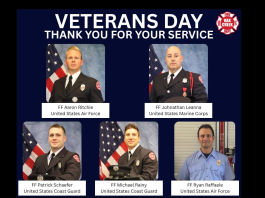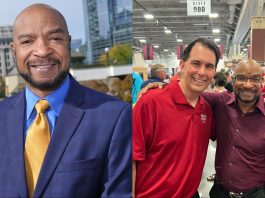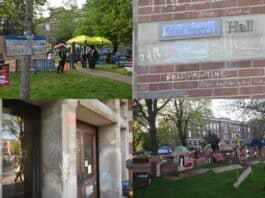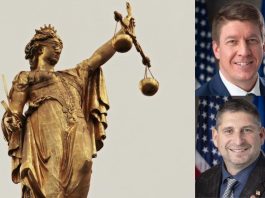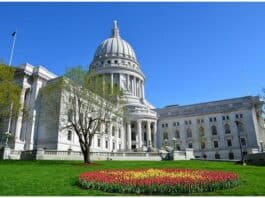This article was written by Chris Mann.
An in-depth review of “Fiery But Mostly Peaceful: The 2020 Riots and the Gaslighting of America by Julio Rosas.”
This summary is the third in a series of reviews of books from the “Riot Reading List” written from different personal perspectives but all from the front line of the 2020 protests.
“I saw buildings torched. I saw innocent people beaten and attacked. I saw livelihoods destroyed. I saw lives broken.” – Julio Rosas, author
Fiery but Mostly Peaceful is a boots-on-the-ground-level spirited historical record of the 2020 civil unrest as witnessed by journalist Julio Rosas while working for Townhall Media.
Mr. Rosas provides a detailed, informative witness account of the 2020 protest-riots from May, 2020 to January 6, 2021. Julio delivers his account along with observations made during follow-up visits to damaged areas and his unabashed opinions about the actions by legacy media and politicians that ignited the unrest and painted a different picture than what he witnessed himself.
Read the book to explore how violence may have been incited by the citing of inaccurate
information. Mr. Rosas asserts that America was gaslit about the seriousness of the protests deemed 93% peaceful. A CNN reporting scene from Kenosha formed the basis for the book’s title.
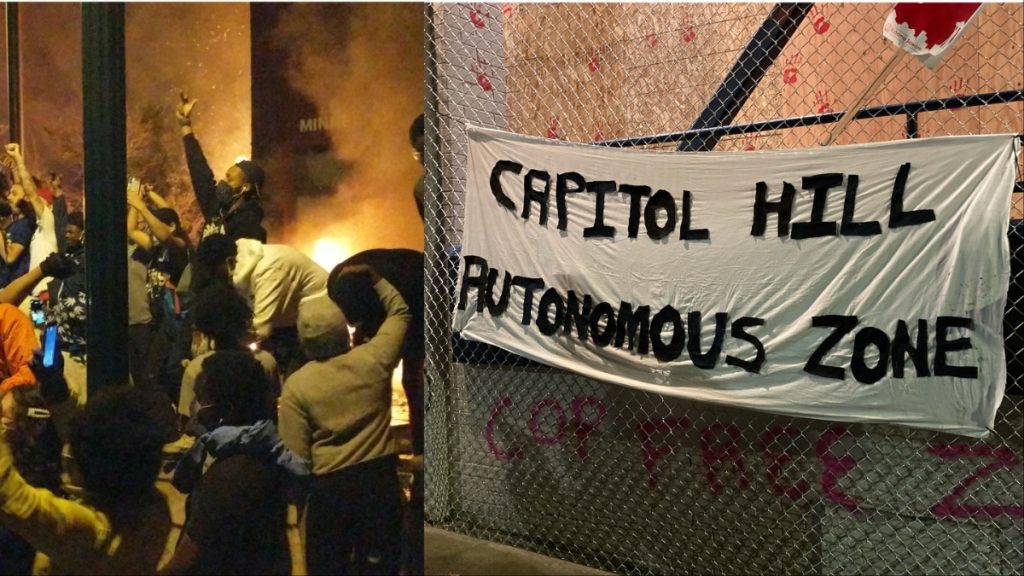
As fire engulfed buildings and cars behind a reporter, the chyron rolled with “FIERY BUT MOSTLY PEACEFUL PROTESTS AFTER POLICE SHOOTING.” Emphasizing the irony and poignancy of reality on the ground, Julio noted, “There were so many fires the air was saturated with smoke” and “There was nothing…even remotely peaceful about the protests that night (August 24, 2020) or any other night in Kenosha”.
The oft-cited statistic of the so-called 93% peaceful protests brings to mind the expression
referencing the assassination of President Lincoln, “Other than that, Mrs. Lincoln, how was the play?” For those impacted by the 7% that was violent and destructive, losing a loved one, a business, a livelihood or suffering injury or damage to their home, business, neighborhood or community, it is of little comfort to have the knowledge that 93% were peaceful.
Julio Rosas is an American of Latino descent who grew up in Wheaton, Illinois in the heart of the Midwest. As a child, he struggled with his heritage and fitting into a white-dominant
community. As a young adult, he left college, signed up for the Marine Reserves and chose a career in journalism. Let’s say his beat became a bit off-beat.
As one of several journalists of the “Riot Squad” who braved the mayhem in order to document those protests that often turned to riots after dark, Julio brought common sense along with his PPE (personal protective equipment) and cell phone. The nimble business model of the independent media enabled him to blend into crowds much more effectively than the conspicuous news crews of the legacy media. While the “Riot Squad” was criticized for showing the dark side of the BLM protests, many of these same journalists provided some of the most gripping and unbiased footage of the Capitol riot and were also critical of that riot.
After the controversial death of George Floyd while in police custody, Julio began his riot tour in Minneapolis, which was fraught with destruction, including burning down the Third Precinct Police Station. Order was restored after several days, leaving estimates of over $500 million in damage and at least two deaths. Julio brought home the after effects of a rubber bullet injury, a reminder of the risks the “Riot Squad” took to document events.
Next, he proceeded to Seattle’s CHAZ/CHOP area, an attempt to create a self-governed zone. Beyond the objective of police abolishment, consensus on the rules of self-governance was hard to come by amongst stakeholders. Ironically and somewhat unsurprisingly, they effectively created a secondary police force of their own to deal with rule breakers.
In less than a month and in the area of about six city blocks, there were four shootings and two deaths as well as rape, assault, burglary, arson and property destruction. After the two deaths of young Black men, the city shut it down.
Julio takes us to the unrest in other cities, including Portland, St. Louis, Kenosha, and
Wauwatosa, Wisconsin. After the shooting of Jacob Blake sparked the tragic riots of Kenosha, Julio found himself in a very chaotic and ultimately deadly situation, resulting in two deaths, one serious injury, an estimated $50 million in private property damage and 40 closed businesses.
He reflects that the Kenosha riot took its toll on him, perhaps more than any of the other riots.
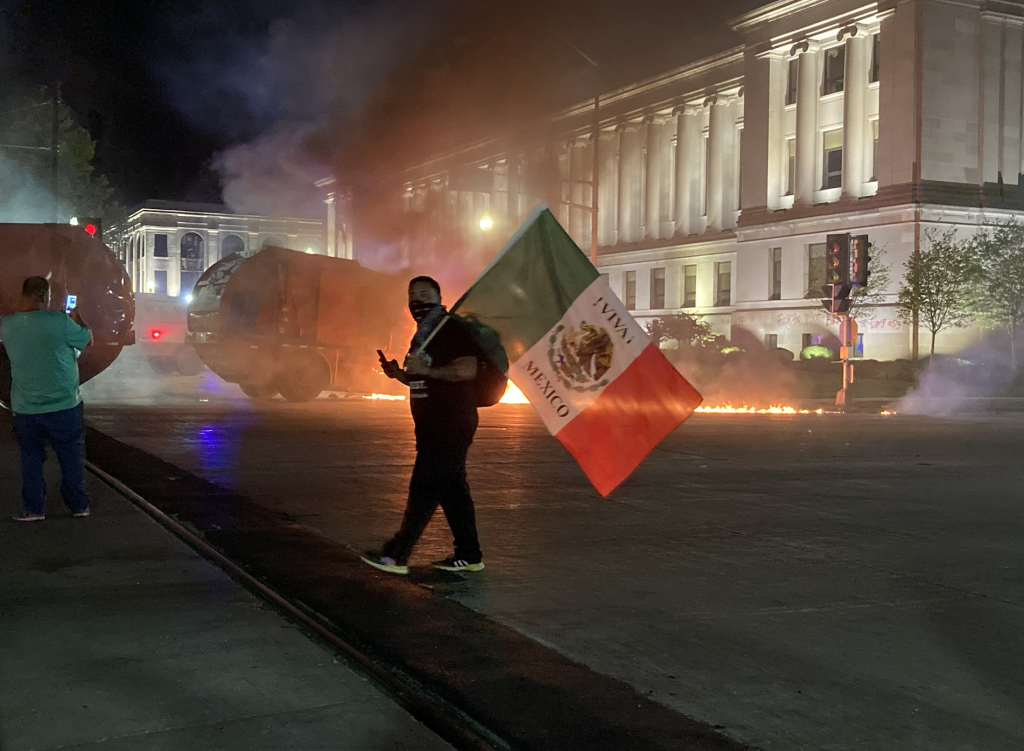
About Wauwatosa, Wisconsin, a community that resembled his own hometown, the author
writes “The most damning evidence refuting reporters’ casual dismissals of the 2020 riots came when I was on the ground in a Milwaukee suburb in October.” The riots there “drove home” to him that no city or town was safe from a riot.
The author eventually finds himself in the middle of the intense and dangerous January 6th
Capitol riot. At this juncture, he takes the opportunity to admonish all rioters and contends that the legacy media and politicians exaggerated January 6th and downplayed the BLM riots.
The protest-riots of 2020 were fueled by a perfect storm of Covid, its effect on the economy, and social and political tensions, but the author asserts that institutions inflamed the fire. Julio chronicles his assertions of hypocrisy and gaslighting by the media and politicians in the manner of a college thesis with facts and evidence, providing examples from Portland and Kenosha, among others.
He’s balanced in his criticism, finding fault with both BLM and Capitol rioters who attacked police simply doing their jobs as they had been during the protest-riots of the summer.and providing examples of police aggression in Louisville and Wauwatosa.
He dispenses a biting assessment of the argument made by various media that looting was a victimless crime and travels back to some of the locations that suffered destruction to assess the aftermath of the riots, taking a personal interest in the riot victims and their plights.
In many cases, riot damage is considered domestic terrorism and therefore isn’t covered by insurance, so business owners faced lost revenue, fewer customers, and wasted inventory, in addition to damaged structures.

The author’s biggest frustration about the downplaying of the riots was that “The criminal
element sees how it can use the current political climate, specifically, the attitude towards
policing, for its benefit long after the unrest is over.”
An entire chapter explores Antifa, most prevalent in the Pacific Northwest, which stands for
abolishing the United States and installing a form of communism. Julio interviewed a
government official who maintained that Antifa was emboldened by not being held accountable.
Local authorities in Portland declined to file charges on more than 80 percent of the cases
referred by Portland Police.
Julio closes the book with a commentary on the effect the riots had on him personally, including physically and psychologically. He exhibited signs of post-traumatic stress, but diminished the threat he was exposed to as compared to combat duty, particularly from his perspective as a Marine reservist. Arguably, the author underrates the seriousness of prolonged exposure as a witness to and potential victim of low-grade domestic terrorism.

The author admits, in the end, that while he hopes we have learned how to avoid it in the future, he doesn’t have the answers to prevent the destruction from happening again.
“There was a brief moment after Floyd’s murder when nearly the entire country was unified in saying Derek Chauvin went too far and that a man died unnecessarily.” He believes that momentum was wasted by demonizing all police officers and calling for defunding the police, even to the point of calling for abolishment “served to poison that discussion before it could even take place. And pushing such a foolish idea, ironically, has only served to make things worse for communities of color…”
As others familiar with the riots have done, Julio evokes war images with a twist on a
famous quote, by stating “…there are no winners in riots, only survivors.”
Julio has a lot to say, and it’s worth taking it all in. This fiery but mostly peaceful riot rendition comes from his heart, demonstrating empathy for everyday Americans trying to get by, especially the victims of the riots. Julio shares not only his ground-level perspective, but he steps back to the aerial view to share his opinion without hesitating to burn the media and politicians he saw as responsible for the gaslighting. He meticulously supports his opinions with facts, statements from media and politicians that were misleading or inflammatory, and ironies and hypocrisies which may have incited more violence to support his thesis that America was gaslit.
Just as Lincoln’s assassination affected the course of our history, so will the year infected with Covid-19 and affected by the death of George Floyd.
Amazon.com: Fiery But Mostly Peaceful: The 2020 Riots and the Gaslighting of America
Julio Rosas’ website can be found here: https://www.juliorosas.com/




